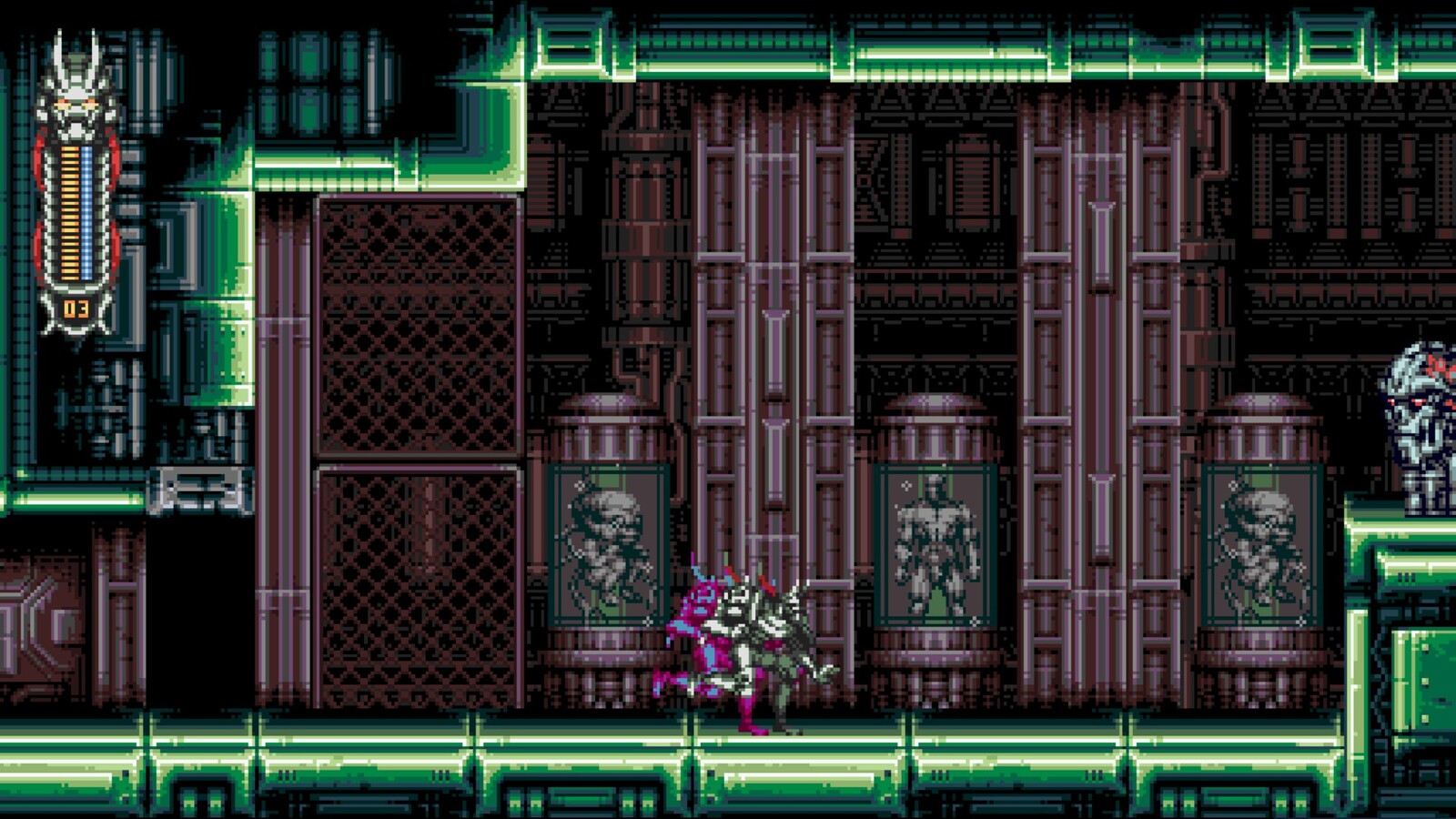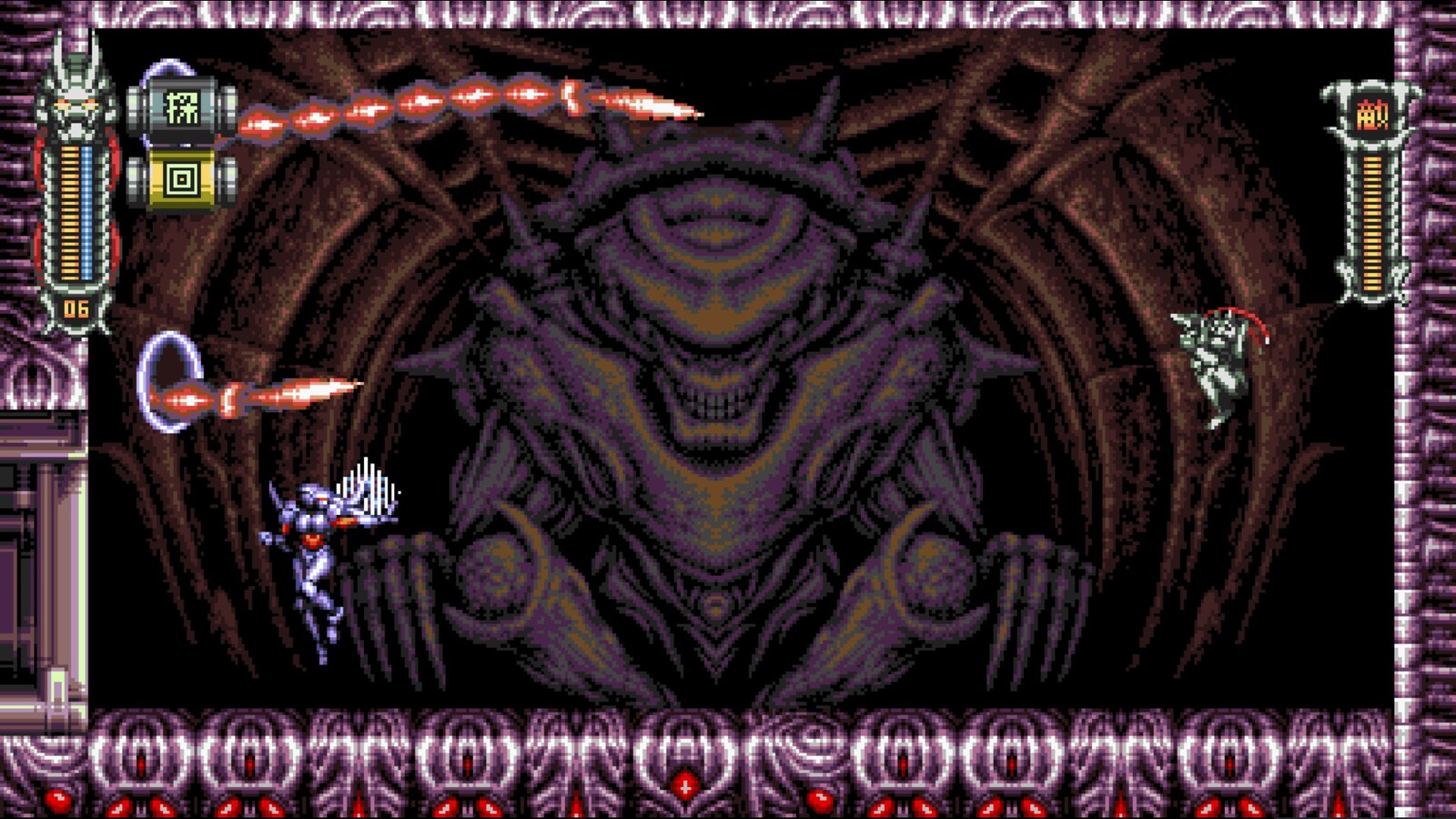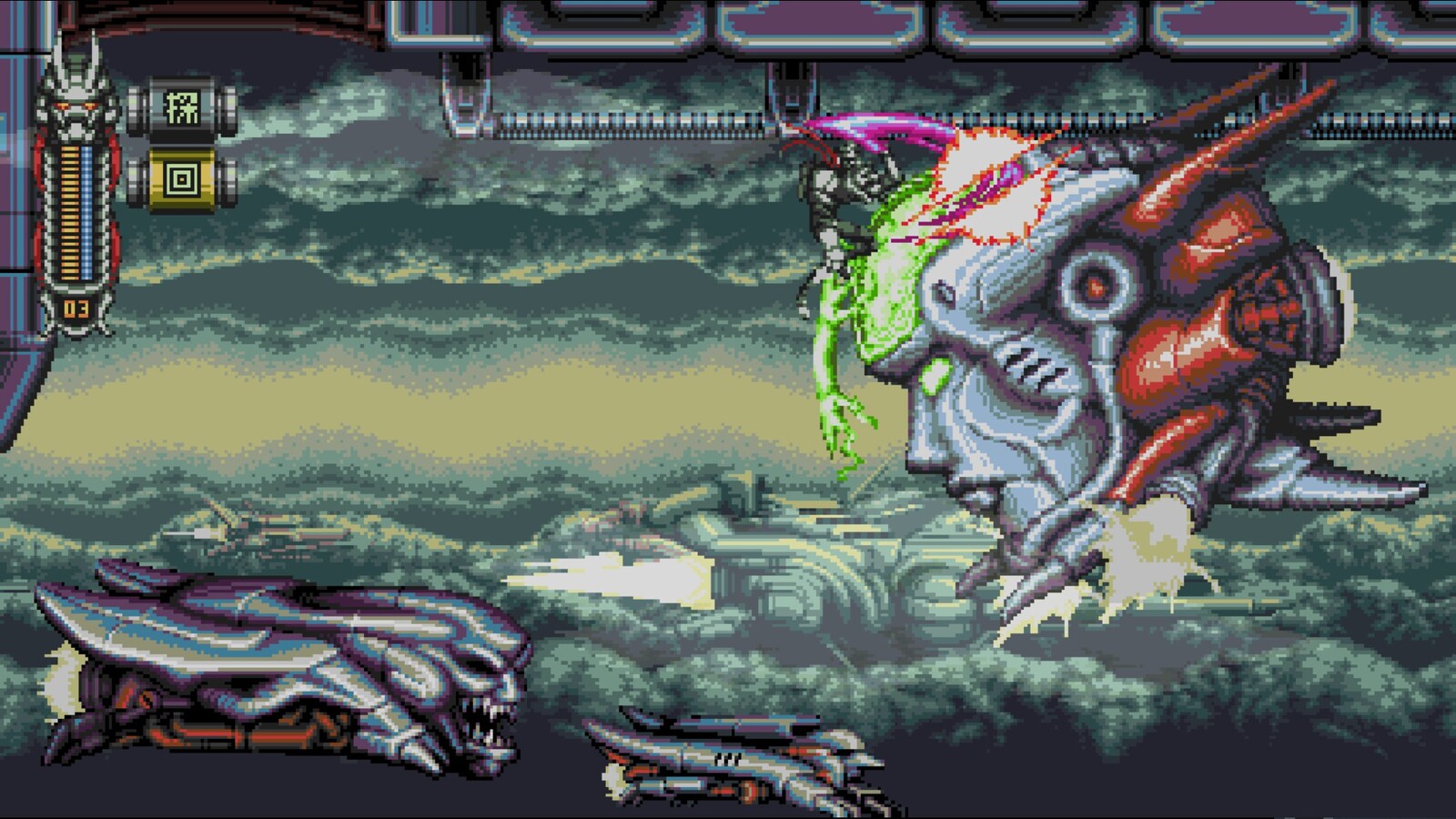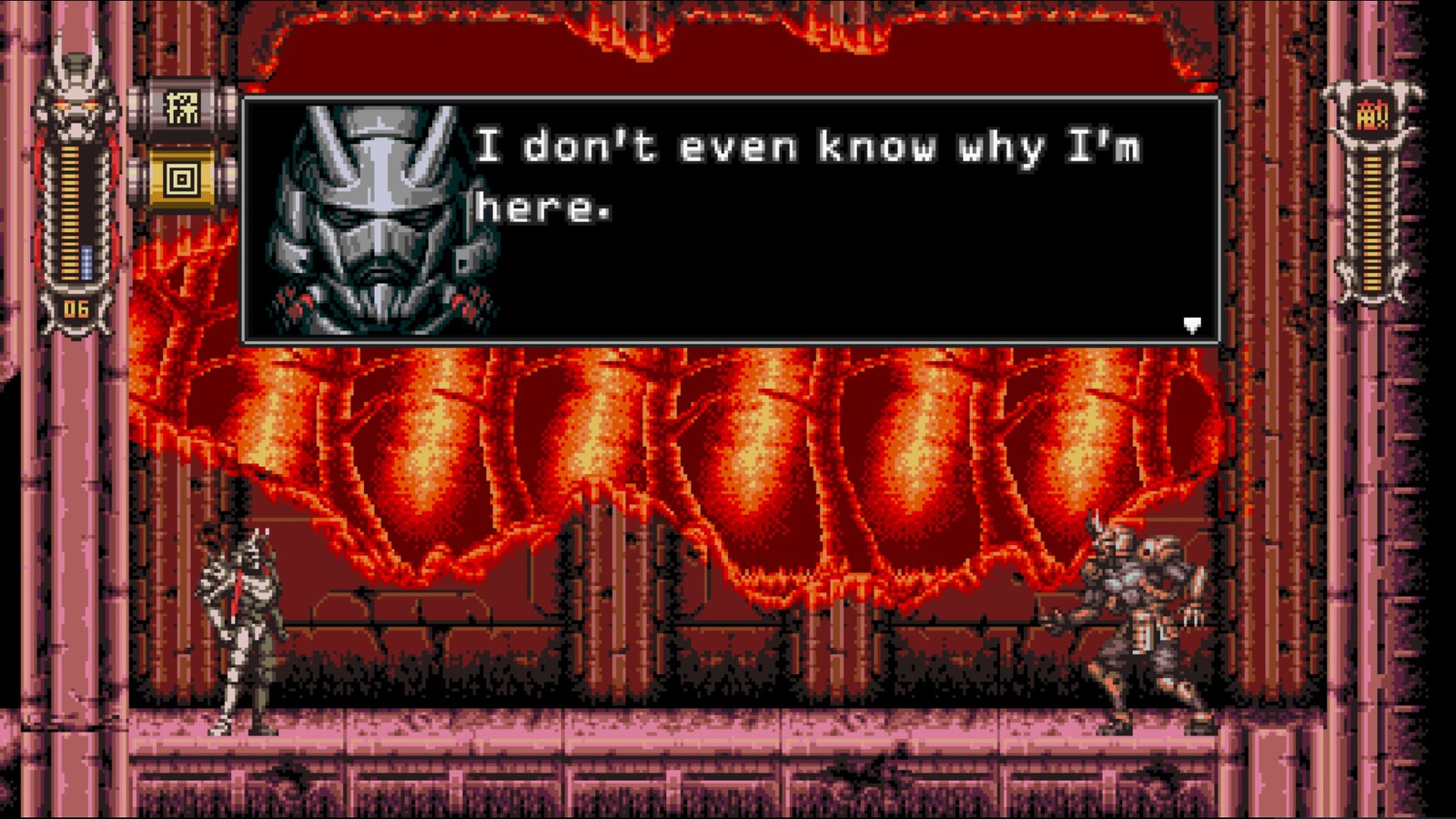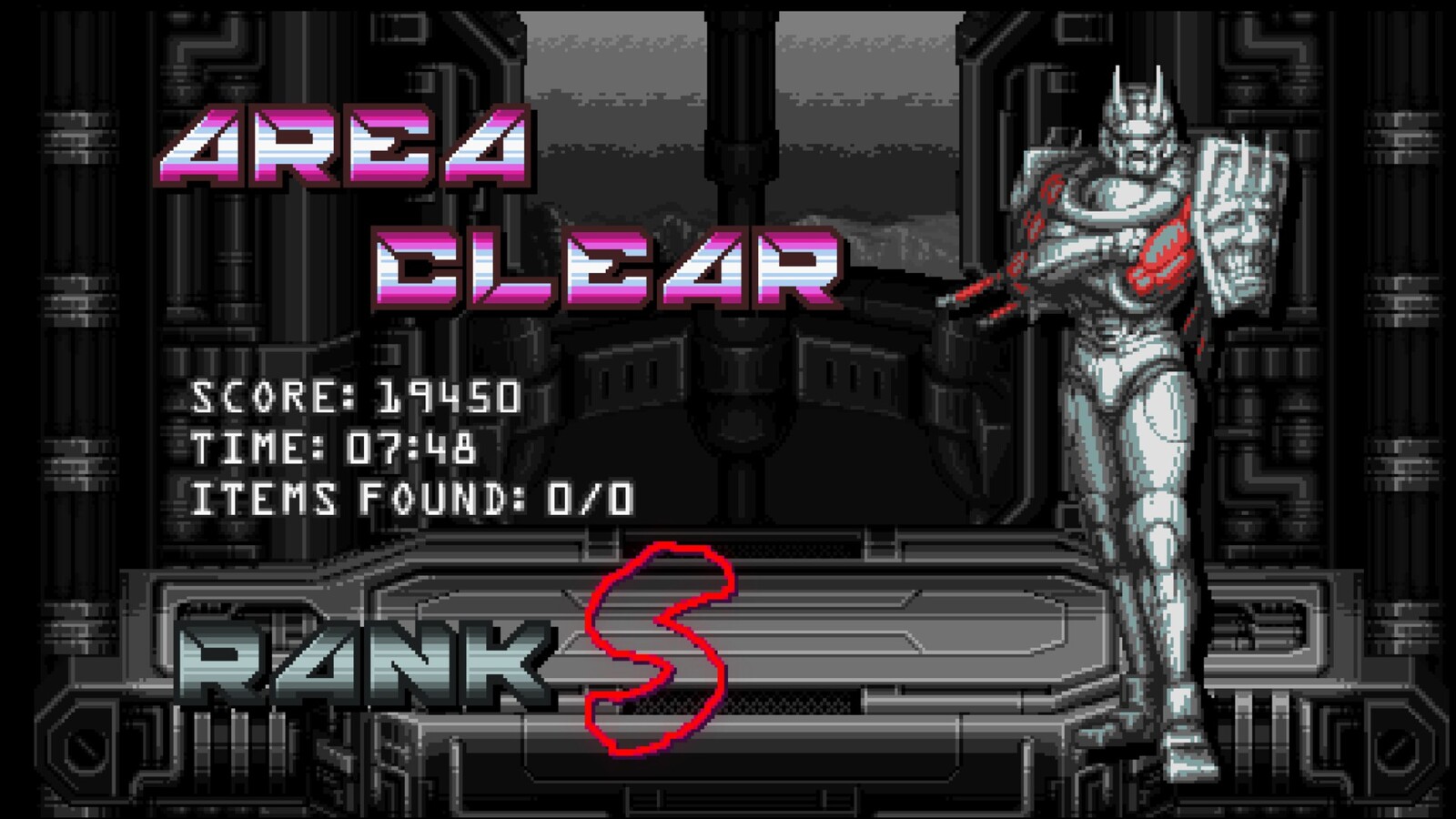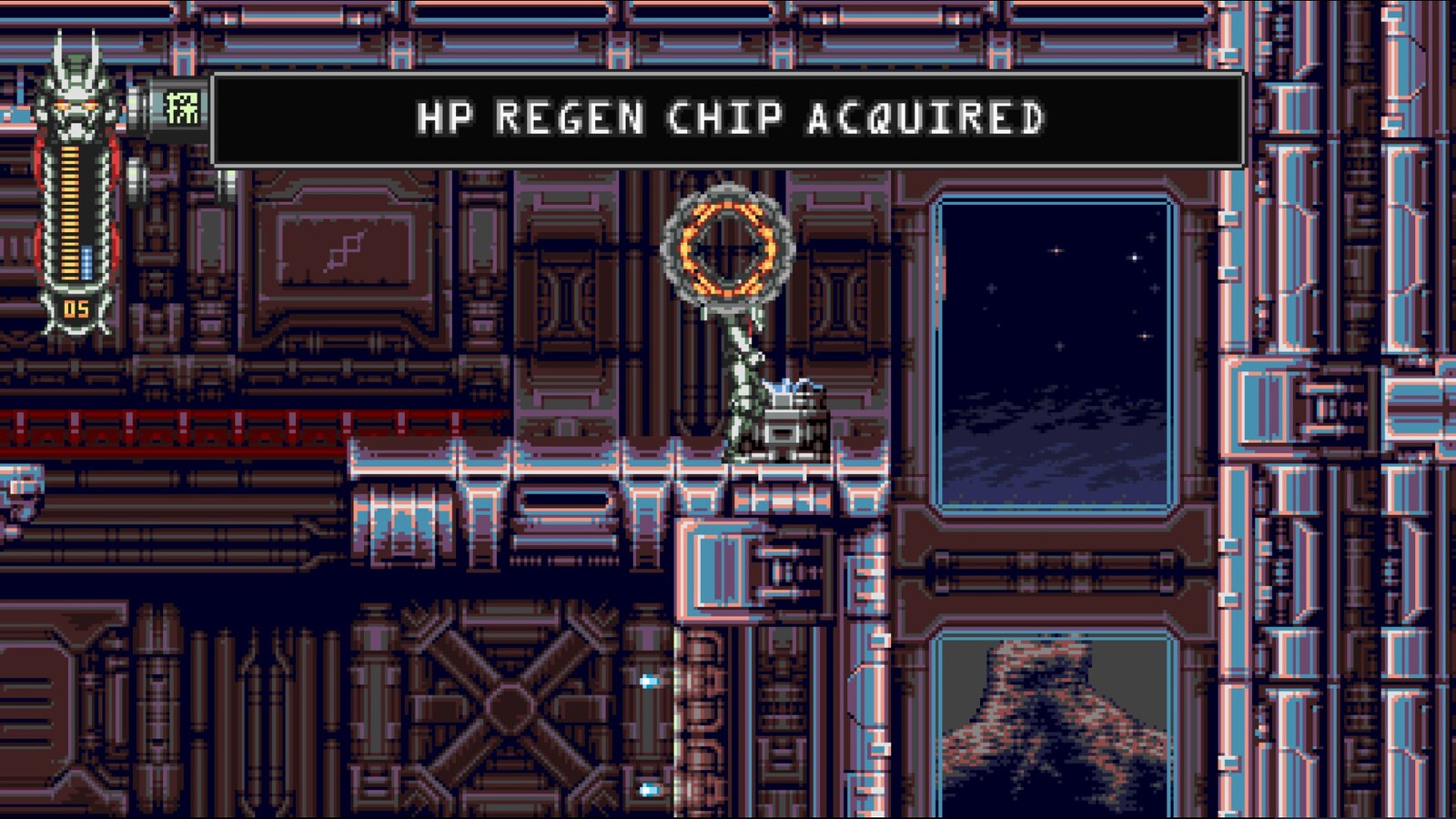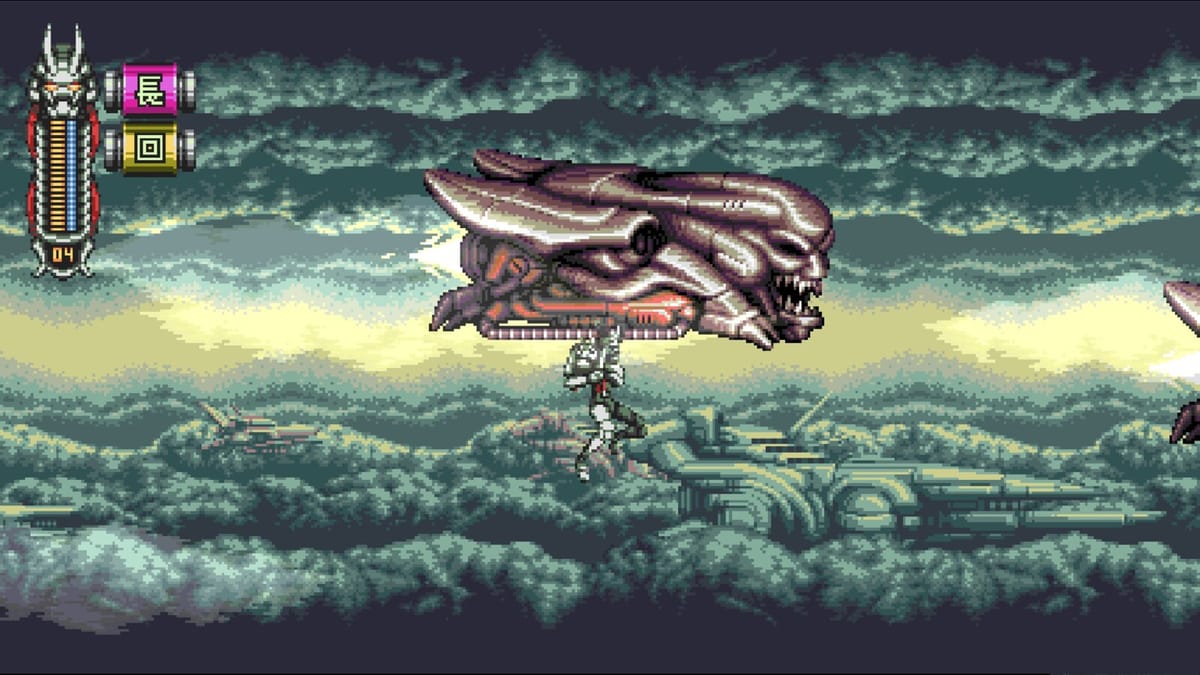
Vengeful Guardian: Moonrider unsheathes a double-edged sword: one that cuts with the strengths of its inspirations while also reflecting its weaknesses in its sheen. It combines elements of many of my favorite games, so in theory I should love it. While I certainly like it, I ultimately came away from my time with Moonrider feeling dissatisfied. Despite the obvious craftsmanship behind it, Moonrider’s blade cuts with a duller force than I anticipated.
Rather than a double-edged sword, it may be more accurate to describe Moonrider as a double-edged pastiche. Normally when I write about a game, I avoid directly comparing it to others as much as is practical. I want to see a game on its own terms and highlight what makes it interesting as an individual experience. No matter how original one claims to be, everyone draws inspiration from something for any kind of creative endeavor. The simple fact that a game borrows elements from other games should not dominate the conversation around it. In some cases, however, a game borrows so heavily from its inspirations that separating them would simply not be telling the full story, as is the case here.
Moonrider blends the ninja platforming action of games like Shinobi and Strider with the feel and progression of a Mega Man game. There’s nothing necessarily wrong with mixing and matching from other games this way, it just comes with a caveat. Games that do this risk obscuring their own identity. If you stick too closely to your sources, you bury the more personal touches. In Moonrider’s case, it borrows in ways that exceed just genre and mechanics, which constantly invites comparisons. I’m essentially judging this game by two criteria: how it measures up to other ninja platformers, and how well it utilizes the Mega Man structure to differentiate itself from them.
What makes a platformer a ninja platformer? You’d think that it must simply star a ninja to be one, but that’s way too simple. I need a more obnoxious definition. More importantly, that criteria would disqualify Moonrider. The titular Moonrider that you play as isn’t a ninja in a traditional sense – he’s more like a robot guy that happens to use a sword. He merely functions like a ninja in spirit.
Foregoing a literal ninja, ninja platformers require a certain kind of execution to be what they are. Ninja platformers practice the hidden art of graceful rigidity. At least in my mind, the image that ninjas conjure up is one of fluid and skillful movement. In a ninja platformer, you recreate that image through skillful play. Despite the typical video game ninja’s great potential, their basic controls often carry a degree of stiffness to them. Your character moves with slight delay, their attacks result in some lag time, and their jumps keep you in the air like you’re floating. The fluidity only materializes as a result of practice. Mastering the controls and recreating that image of the graceful ninja is part of what makes these games fun.
Moonrider differs from games like Strider or Shinobi by removing a lot of that stiffness. Your character moves with speed and a high degree of precision – you don’t need to adapt to the controls, which changes things. His moveset basically functions like a souped up version of the character in Shinobi III: Return of the Ninja Master that lacks the control quirks and drawbacks found in that game. You can slash, dash, jump off walls, and kick enemies mid-air, with the double jump being locked behind a collectible.
Despite this, Moonrider does apply the principle of graceful rigidity in a few places, mainly its attacks. Moonrider attacks primarily with single slashes, but has access to two methods of dealing higher damage when necessary. By attacking after a dash, you lunge at enemies with a blow that can kill most in one hit. If you tap the attack button multiple times in a row, you’ll do a three hit combo slash. Both of these methods trade your mobility for damage and require you to at least briefly stop in place. While that may not initially seem like a big deal, it makes a difference when you speed through levels. A simple mistimed slash or getting greedy with a combo can put you in a bad spot.
Moonrider maintains what makes ninja platformers fun while in some ways simplifying their appeal. Of course, Moonrider doesn’t need to perfectly recreate the appeal of its predecessors and in fact I don’t believe it should. The smoother controls may actually win over people who may struggle with the stricter methods of the ninja platformer classics. This approach comes with trade-offs, however. Games like these revolve around details, so I feel compelled to nitpick a bit to highlight some of the weaknesses that come with making the game more easily playable.
Here’s an example: while the controls generally feel smooth, the one area where I found this to be a detriment was when it comes to hanging. Throughout the game, there are various pipes or other types of rails that you can grab and climb across, as ninjas are wont to do. This mechanic shows up in plenty of ninja platformers – it’s a bit of a mainstay. It becomes a problem in Moonrider, however, due to the way it executes the concept. When you hang on one of these surfaces, the Moonrider connects with it almost like a magnet whenever you are close enough.
This quirk backfires during a particular mini boss fight where a hangable ceiling covers the arena. Whenever I attempted to dodge its energy blasts, I’d find myself accidentally sticking to the ceiling and eating a bullet. I eventually adjusted around this annoyance, but this situation stuck out to me as an odd oversight. I went back to the source and played through Shinobi III to see how it handled this issue. Sure enough, Shinobi III solved this problem nearly thirty years ago by requiring you to hold up in order to hang to a surface. Was this actually an oversight or a deliberate choice?
While I can’t speak for the developers, I suspect that the hanging in Moonrider works the way it does because it’s far more intuitive this way. They never have to explain to the player that you need an extra button press to hang on to something, your character just does it. I, of course, have played enough games like this where I know to experiment with different button combos until it works. I can figure something like holding the up button out by pure instinct. That may be a sign that I have a problem, but the damage is done and this is my superpower. Modern players unfamiliar with these kinds of games may not have the same reflex. They could genuinely get stuck or frustrated without additional guidance that may otherwise bog down the game.
That idea summarizes the issue I have with Moonrider – not the hanging thing, that’s a little petty even for me – but sacrificing playability for intuitiveness. Moonrider tries too hard to accommodate players at the cost of a far more interesting design. To put it bluntly, the game feels a little bland.
Part of the problem is that I am familiar with all the tricks in the books that Moonrider pulls from. There are many parts throughout the game where I thought “oh this is just like that enemy from Mega Man X” or “this part is just like in Shinobi.” I don’t play new games just to recognize things I already know, though. I am not estranged from Shinobi III, we are still on speaking terms and hang out at least once a year. A little referencing is fine, but I’m here to see how the game twists or builds on its predecessors. Moonrider falls short in that department.
Basically, I never felt like the game pushed me or its ideas too hard. The game contains fun sections for sure, I was just never surprised by what I played. I never got particularly excited or even frustrated. It was a mostly pleasant experience and that’s about it.
I got the sense that the developers recognized what works about games like Shinobi, but were either uninterested or unwilling to go beyond that. More than that, I got the sense that they didn’t want to challenge the players too much. The platforming sections never get more complicated than bouncing off walls with the right timing. If you do make a mistake and fall into a pit, you immediately respawn with only a small health loss. Most of the game’s challenge lies in the enemy encounters. While they are fun, they rarely take more than a single try to figure out. If anything, many of the more humanoid bosses fall into similar trappings and attack patterns which can make some encounters blend together.
It’s not like there isn’t room to experiment with the game design, either. The jump kick bounces you unusually high, which has some interesting platforming implications that end up being pretty underutilized in the level design. Some levels integrate puzzle elements that in their current incarnation are so simple they may as well not be there. I can clearly see opportunities for a more compelling game here. I can’t help but wonder if the developers held back on making something too strange or complex because that would sacrifice some of the intuitiveness of the core design.
That should be where the Mega Man elements pick up the slack. Unlike a Shinobi game, you can play the majority of stages in Moonrider in any order. Just like Mega Man, each boss at the end gives you a special weapon upon their defeat. Although these elements inject some freshness into the experience, I again have some nitpicks that diminish their effectiveness.
In Mega Man games, the boss weapons provide utility that normal Mega Man lacks. Mega Man only shoots horizontally, for example, so boss weapons that let him shoot in any direction can make a big difference. You don’t typically need these weapons to survive, they just add to your options and have clear situations that encourage their use.
Although Moonrider offers a surprisingly large selection of weapons, I struggled to come up with more than one practical use for them: killing enemies, particularly bosses, slightly faster than I normally would. You already have a high degree of versatility in your basic mechanics, so the game rarely places enemies or obstacles in a way where using a boss weapon feels worth the trouble. Even if you wanted to use your weapons to take out the basic enemies, the game disincentivizes using your weapons superfluously by tying them all to a single meter. It doesn’t make sense to waste your ammo on fodder when you know a tougher enemy looms in the distance, even with the game’s frequent refills.
At the very least in a Mega Man game, you know the bosses are weak to each other’s weapons, which adds an element of strategy to the order you play the stages. That doesn’t seem to be the case in Moonrider; most weapons help kill bosses faster, but at least in my experiments, I couldn’t clearly tell if one was more effective than another damage-wise. That being the case, I can’t say the stage selection adds much of anything other than some slight variety for subsequent playthroughs.
This all culminates in a game that I felt a little let down by. Moonrider is disappointingly easy and straightforward. Each stage hides upgrades that virtually all focus on making the game even easier than it is rather than more interesting to replay. The game has a ranking system, but I managed to get S rank the entire game on my third playthrough without much issue, as you mainly just need to clear each stage without dying.
Moonrider unfortunately doesn’t offer all that much to someone familiar with inspirations. If anything, knowledge of those games magnifies some of its shortcomings. If you look at Moonrider on a surface level, someone like me should be the target audience here, but I don’t think that’s how it turned out. Instead, I actually think that the less familiar you are with games like this, the more you’re likely to enjoy it.
Vengeful Guardian: Moonrider
Good
Rather than being a game for people who miss the old school ninja platformers of yesteryear, Moonrider feels more like a game made for the people who miss the idea of them. The game borrows liberally from its inspirations and combines them into a game that looks and plays the part just fine. It just doesn’t push itself or the player on a level that will fully satisfy people who still regularly enjoy the games it takes from.
Pros
- Looks and feels great to play
- A nice entry-level game for people unfamiliar with its inspirations
Cons
- Doesn’t push its mechanics or the player very far
- Closeness to its inspirations magnifies its weaknesses

